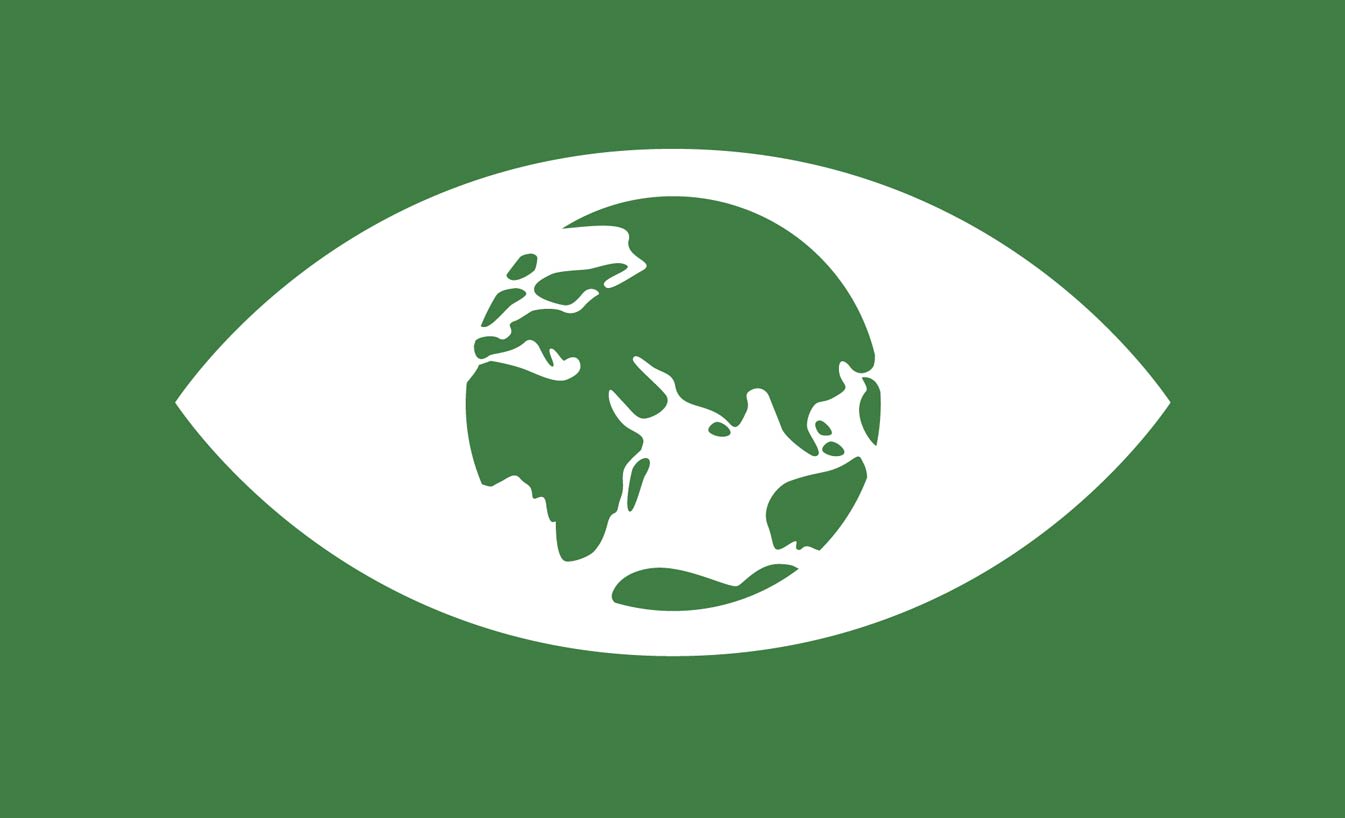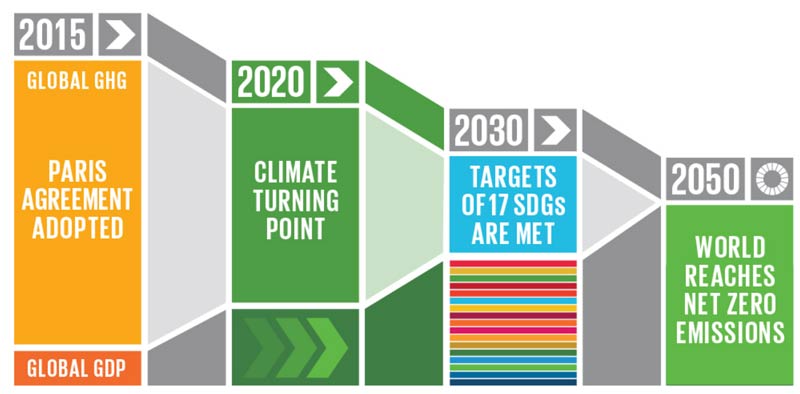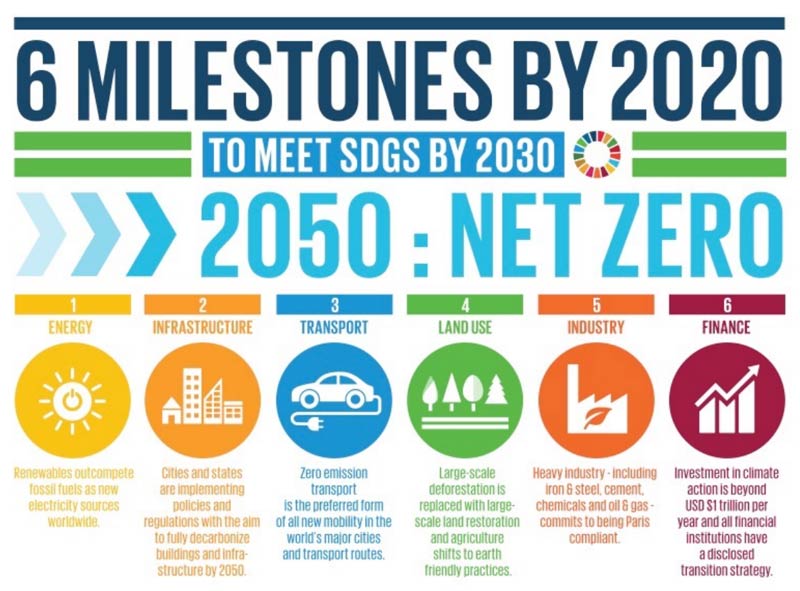
In December 2015, acting under the UNFCCC, 195 nations negotiated the Paris Agreement, committing to do what it takes to keep temperature increases from rising more than 2°C (3.6°F) above pre-industrial levels by the end of the century.
The Paris Agreement, a generation in the making, is the most ambitious global resolution on climate change, and the first time in history that nearly every country agreed to work toward a fossil-fuel-free world.
But that was just the beginning. The Paris Agreement relies upon a ratchet mechanism, in which commitments must be increased every five years. That makes 2018 a critical year for climate action; it marks the midpoint between the ink drying on the Paris Agreement and the next agreed step for raising the bar toward achieving the well below 2C temperature target while striving for 1.5C. It is the year to step up climate action and ambition globally, across all sectors of the economy in support of Paris and thus all the sustainable development goals.

In April 2017, Mission 2020 launched a global campaign, convened by former UN climate chief and lead negotiator for the Paris Agreement, Christiana Figueres. The campaign was designed to inject urgency into efforts to address climate change after experts marked the year 2020 as the critical turning point by which we must bend the curve of carbon emissions.
Climate Change and the Global Goals
The world community has also agreed to meet 17 Global Sustainable Development Goals, by 2030, including ending poverty and hunger, and ensuring universal access to affordable, reliable, sustainable and modern energy.
If we are late to the 2020 milestone, and emissions have not begun a steady decline by then, we will all but eliminate our chance to stay within the agreed range of a 1.5C to 2C temperature rise, beyond which the impacts we see already – record Arctic ice melting, famine-inducing drought in Africa, unprecedented coral-reef bleaching at the Great Barrier Reef – are likely to worsen, impacting everyone, especially the most vulnerable.

Missing the 2020 milestone would also put meeting all the Global Goals at risk.
A rise of 2 degrees risks exacerbating mass migration, hampering progress made against diseases such as malaria, inducing higher levels of poverty and therefore lowering the chance for full education and gender equality. All this shows us that the window of opportunity for urgent action to meet the 2020 climate turning point is now.
This unique opportunity to accelerate climate action to ensure success for all the sustainable development goals will generate a host of co-benefits, including in health, energy, and food security, and jobs - providing a basis for shared prosperity and financial stability for all.
6 milestones by 2020 to meet SDGs by 2030
There is a plan with deliverables that would put the world on track by 2020 to both protect the Paris Agreement in the short term and achieve its goals in the longer term.
We must massively accelerate climate action in the period from now to 2020.
This is a task for every business, investor, city, region and country and we must call them to it with determination and clarity.

The logo we have developed wraps the Global Goal 13 (on climate action) and it’s dark green identifying colour around the 17 goals to represent the fact that all the Global Goals are relying on accelerated climate action.
Accelerating climate action to ensure success for all the sustainable development goals is a vital message, not simply a logo, and it unites the climate and development sectors.



